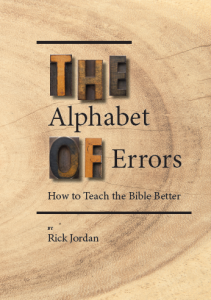
I have many nativity scenes sprinkled through my house. They range from the traditional – an olive wood set that I bought in Bethlehem – to the whimsical – Jesus and his parents riding on top of a hippy van (immigrants on their way to Egypt, I assume.)

It is thought that nativity scenes were first created by St. Francis as “live nativity sets,” with real people filling a manger scene. With this live montage, Francis was able to interpret the birth of Jesus for those who were illiterate or who had no access to written Scriptures.

Some churches do live nativity scenes. The church I pastored had these for many years. A large construction project caused the church to miss doing it one Christmas. That was 18 years ago and I don’t believe it has been done since then. While it was a lot of work to orchestrate and conduct, it was very well done and thousands of persons came every year to experience it.
One problem for most nativity scenes is that they aren’t “Biblical.” Or maybe they try to be “too Biblical.” By that, I mean that the nativity scenes try to mash the infancy narratives of Matthew and Luke into one panoramic scene. For example, the shepherds went to Bethlehem to see the baby Jesus. (The Wise Men came much later – the word used to describe Jesus was not the word used for infants but for toddlers.) So, they were not all hanging out together around the manger.

Some nativity scenes have an angel hovering over the stable. There were angels in the nativity story. One visited Mary and Joseph separately. Many angels sounded God’s praises above the shepherd’s sheep. But we do not have record of an angel sipping coffee in the corner as guests kept arriving. And all those animals crowding around the people – sheep, donkeys, camels, I’ve even seen chickens – there is not one peep about them in the gospels, though it makes sense that the shepherds did not leave their sheep untended and that the Wise Men did not travel from Persia on foot. Still, to be Biblical…

Does it matter that our nativity scenes are not literally images of the events? I’m surprised that those who attempt to interpret the Bible literally have not raised a fuss by now. Maybe they see the harmlessness of a little poetic license with this story. That’s how I feel. “Biblical” is broader than “literal.” There is a time and a place to make clear the chronology and the characters. A sermon or a children’s sermon or a small group Bible study are proper places for that.
But the message of the incarnation is that God came for the redemption of all persons (and creatures). If the poor, the rich, the ignorant, the intelligent, the saints, the sinners, the two- and the four-legged are all represented in a single view – well, that sends a more accurate message than a literal snapshot could ever have done.



As you say, the poetic license allows us to cover more than just the “main event.” It tells a moving story that helps us to realize the magnificence of what took place “around” that time. What a blessed time and how blessed we are to take hold of it. Thanks for your observations … they are helpful and clarifying. I love all of your photos!
Great points, Rick.
I love my collection of Nativity sets (60+) and the varied interpretations. Advent runs deep here since all the removable Baby Jesus figures are waiting patiently in the gingerbread house for the big day. I may start having the magi wander through the house next Advent.
Advent is the beginning of Adventure.
it came as a surprise to learn that the Magi’s visit probably happened a year or two after the birth. More intriguing is the notion that if Daniel was an historic person, his teaching may have instilled a messianic expectation in Babylon / Persia for centuries to come…